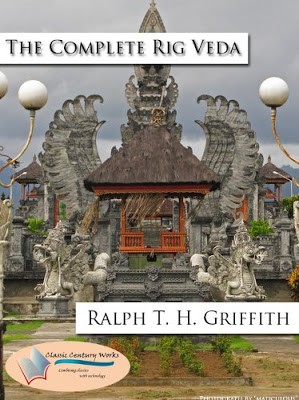This article (excepts at end of this post) is a good summary of the (relatively reasonable) Hindutvadi arguments for regarding India as one civilizational and cultural whole (at least in historical time). i.e. you don’t have to share the author’s Hindutvadi beliefs to accept a lot of his arguments for the civilizational and cultural unity of India.
Of course, nation states may come and go and even civilizational boundaries can and do change; Tunisia and Libya used to be pretty Roman and now they are pretty Arab. stuff happens. One would not be likely to lose much money betting on Xinjiang being very Chinese for centuries to come. Han migration alone will take care of that. But still, there is a civilizational and cultural unity of India and that is not such a bad basis for a nation-state… It is certainly better than many other UN member nations have these days (hint hint..)
By the way, you will notice that even “soft Hindutvadis” with relatively rational arguments continue to have serious difficulty with the Indo-European invasion/migration into India. Come on dude, man up, stop getting scared of being steamrolled by superior propaganda apparatuses, own ALL your ancestors 🙂
…o there we have it. India is one of the few nations of the world with a continuity of civilization and an ancient conception of nationhood. In its religious, civilizational, cultural and linguistic continuity, it truly stands alone. This continuity was fostered by its unique geography and its resilient religious traditions. Unlike any other country on the planet, it retained these traditions despite both Islamic and Christian conquest, when most countries lost theirs and were completely converted when losing to even one of these crusading systems. The Persians fell, the civilizations of Mesopotamia and Babylon were lost, the Celtic religion largely vanished, and the mighty Aztecs were vanquished, destroyed and completely Christianized. Yet Bharata stands. It stands in our stories, our languages, our pluralism and our unity. And as long as we remember these stories, keep our languages and worship the sacred land of our ancestors, Bharata will stand. It is only if we forget these truths that Bharata will cease to be. That is precisely why the British tried to hard to make us forget them.
….
You are excluding Islamic contributions and Indian Muslims from your definition
This essay is about finding the historic roots of the Indian civilization and defining who we are as people and as a nation. We have had many migrants and invaders. While Islam has contributed to the Indian civilization, our roots are much older than when Prophet Mohammad first appeared in Arabia in the 6th century AD, so our civilization cannot be defined by Islam. Alexander the Greek came to our shores, so did the Kushans and Mongols and Persians and Turks. All of them added their contributions to our civilization as we did to theirs. The Mughal Empire helped in our political re-unification. But none of them define who we are.
We had the great Chinese civilization towards the north and the Persian civilization towards our west. Each of them influenced us as we influenced them. But because the Chinese came under Buddhist influence from India does not mean that they cease to be the Chinese civilization, an entity with a distinct cultural flavor and history from India.
Similarly, the Persians and the Turks came in many waves and contributed to Indian culture, even as we did to theirs. This does not mean that our civilization suddenly became Persian or Turkish. Some of these people settled in India, some of them brought a new religion called Islam and converted some of the existing people. All those who ultimately accept India as their homeland are accepted as Indians, for we have been a welcoming land. It would be a strange case indeed if conversion to Islam led people to deny the roots of their civilization. Do the Persians cease to be Persians, now that they are Muslims?
Islam does not define nationhood. If it did, the entire region from Saudi Arabia to Pakistan would be one country. Iran and Iraq would be one large Islamic country, rather than separate entities based on Persian and Babylonian civilizational roots. Indonesia and Malaysia would be one country.
Thus the civilizational roots of India belong to all Indians, Hindus, Muslims and Christians. Indonesian Muslims don’t trace their civilizational roots from Arabia, but from the Indonesian culture developed over the centuries. As Saeed Naqvi writes, the Ramayana ballet is performed in Indonesia by “150 namaz-saying Muslims under the shadow of Yog Jakarta’s magnificent temples for the past 27 years without a break” — Indonesians can apparently celebrate their civilizational roots without conflict of their being Muslims. There is no reason that Muslim Indians feel any differently unless led by the creation of fear or sustained demagoguery to believe otherwise.


